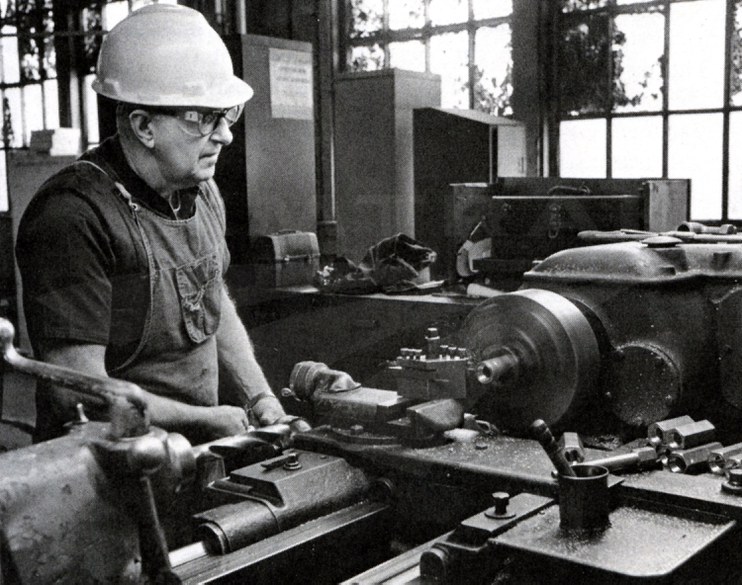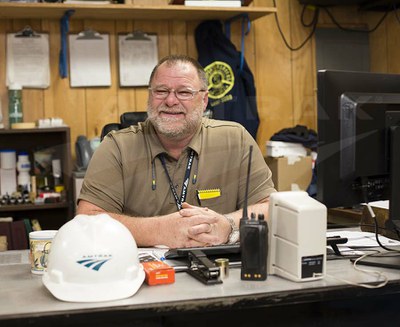Amtrak Voices: Gary Woods
CommentsMay 5, 2015
Amtrak Voices is an occasional series in which we talk with long-time Amtrak employees to discover what attracted them to the company, recount its early days and explore changes they witnessed in railroading during their careers.

A machinist creates brass nuts on a shop lathe, 1980.
On April 1, 2015, Amtrak celebrated 40 years of ownership of the Beech Grove heavy maintenance facility located southeast of downtown Indianapolis. When Amtrak began service on May 1, 1971, the Penn Central Transportation Company controlled Beech Grove and performed contract maintenance and overhauls on Amtrak locomotives and rolling stock.
Amtrak purchased the shops in 1975, when there was an acute need for a major repair facility that could accommodate all types of equipment—including the Amfleet and Superliner cars then on order. Amtrak immediately embarked on a five year, $22 million improvement plan to modernize the complex.
Today, more than 500 Beech Grove employees rebuild and overhaul Superliner, Viewliner, Surfliner and Horizon cars, as well as P-32, P-42 and F-59 locomotives used across the Amtrak system. In Fiscal Year 2014, employees performed heavy overhaul, periodic maintenance, repainting and other upkeep on 275 pieces of equipment.
A dozen employees have been at Beech Grove since April 1, 1975, and we’ll meet a handful in a series of blog posts over the coming months.
Gary Woods
Foreman 3 Gary Woods, who oversees the forge shop, started at Beech Grove in January 1974 as an 18 year old. Like many of his colleagues, he belongs to a family with a long railroad history; five generations have worked at Beech Grove. He started out as a carman in the truck shop and later served as the general foreman in coach shop 2 where employees refurbish cars that have been stripped and inspected. Before they return to revenue service, the cars pass through the trim shop where paint and decals are applied, seats installed and other tasks completed.

Woods recalls many changes to the complex and its operations, including replacement of the original dirt floors with concrete in the 1990s, the switch from DC to AC power and conversion of machinery from steam power to modern hydraulic systems. Some of the original sledgehammers and other machines were only removed a few years ago, says Woods.
Among the jobs completed in the forge shop are the rebuilding of all couplers used on cars and locomotives throughout the national system. With the passing of years, Woods notes that certain skill sets have faded and been replaced by others. For example, numerous blacksmiths used to work at Beech Grove, crafting custom parts for cars and locomotives. Today, boilermakers, who use pre-made parts, are more common around the shops.
“I’m not afraid to get out on the floor and show how to get the job done,” Woods says when asked about mentoring new hires. He adds that it’s important to transfer skills and knowledge to the next generation before they are lost. Although formal learning in school is important, longtime employees have developed an intuition that only comes with experience and trial and error. In many cases, it can only be conveyed through one-on-one interaction.
Summing up four decades with Amtrak, Woods reflects, “It’s been a hell of a job that allowed me to make a good living.”
Read about Woods's colleague Steve Osburn.
--------------------------------------------------------------------------------------------------------------------
The Amtrak History interview with Gary Woods took place on April 2, 2015.




